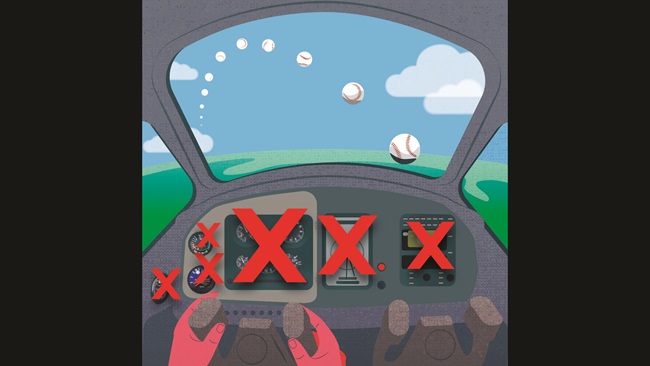![]() Between the worsening turbulence and the reprimand from air traffic control for a blown altitude, your demeanor is rapidly decaying from merely harried to flustered and defensive.
Between the worsening turbulence and the reprimand from air traffic control for a blown altitude, your demeanor is rapidly decaying from merely harried to flustered and defensive.
Now, however, is not the time to rehearse your lines for a testy phone call with ATC. If that becomes necessary, it will be only after you complete the approach for which you are about to be cleared.
Been there, done that? At times like this there should be a warning light on the panel that flashes the message, “Pilot distraction.”
But there isn’t, so here’s what happens next. As a 25-knot north wind rakes the airport, your flight is assigned a new altitude and cleared direct to JUDKY, the initial approach fix for a full NDB RWY 1 approach.
Bound and determined not to commit another altitude error, you concentrate intently on complying with the instructions.
At times like this there should be a warning light on the panel that flashes the message, “Pilot fixation.”
But there isn’t, so here’s what happens next. Your undecelerated high-performance single overheads the JUDKY NDB outbound for a procedure turn at a hot cruise airspeed. And at 2,900 feet, the north wind—now a tailwind—is much stronger.
However, you have vowed to fly this approach by the book. And it says that to fly a standard 45-degree procedure turn, you should time outbound for two minutes before beginning the course reversal maneuver.
Careful! With a groundspeed of, say 160 knots, that would consume more than five miles. The additional minute consumed by a standard-rate 45-degree turn and an outbound leg would also be flown with a strong tailwind component, bringing you pretty close to the 10-mile restriction published in the procedure’s profile view.
At that point you could spare yourself hearing another quizzical comment from the radar room if you snap back to form and remember to run a mental checklist, reminding yourself to make a throttle adjustment—and perhaps lower the landing gear, another frequent casualty of distraction-fixation-accident syndrome.
Once you complete the procedure turn and head back inbound, the headwind should give you plenty of time to intercept the final approach course, establish a proper wind-correction angle, regain your composure, and land safely.
At times like this there should be a light on the panel that flashes the message, “That was close.”



